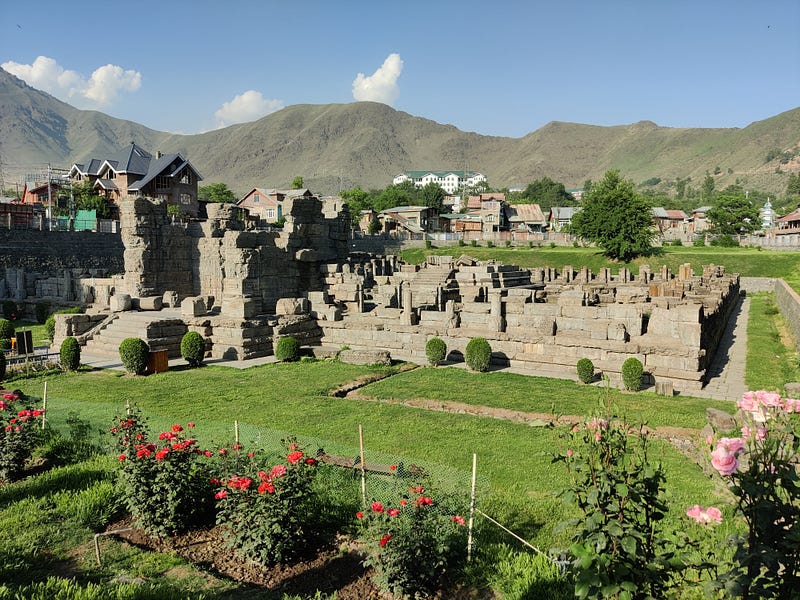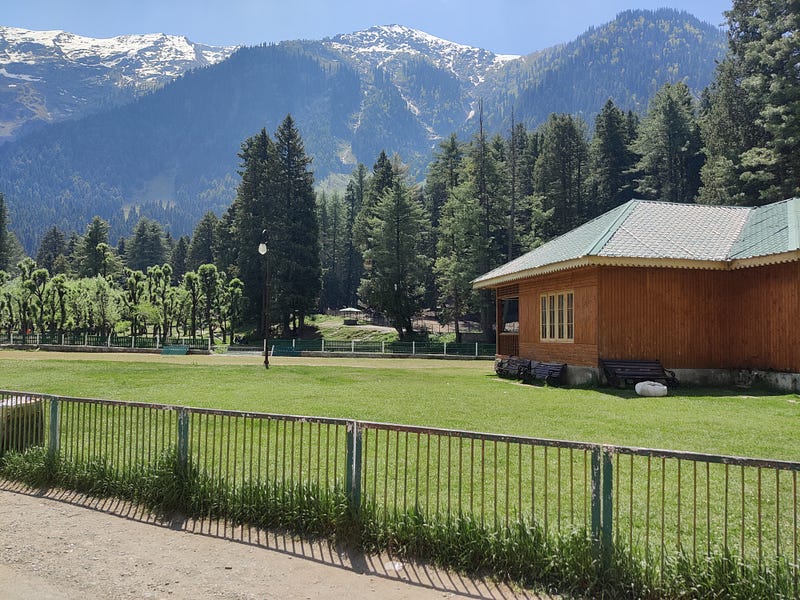
We were ushered to our vehicle once again. We were to reach Pahalgam in three hours but the star attraction was the Saffron flower farms at Pampore, a small city close to Srinagar. The city is nourished by the river Jhelum and the climate here is ideal for growing saffron, so it is called the Saffron Capital of India. As we left Srinagar we saw many of the saffron fields lying forlorn but the meadows were green and beautiful. We were told that the fields bloom from July to October. On reaching the farm we were ushered to a huge hall equipped with a seating arrangement for sixty people. We quickly took our seats.
The place was bustling with beautiful fair girls dressed in long attires with their heads covered with scarves. They had aquiline noses and fair skin with dark eyes. We were uncertain about what would be presented when a lean tall fair-skinned man exclaimed, ‘Everyone, I’m going to share something about saffron.’
The doors were closed, and suddenly a baby tumbled from his seat. While the mother comforted the baby, all eyes turned to her.
The fair-skinned man raised his voice and started once again, he had a perfect way of addressing and captivating his audience. One of the tourists picked up his phone to shoot the scene…The fair-skinned man yelled, ‘No video, no photographs’. We sat silently and listened to the saffron farming. The man said, ‘The stigma of two to three hundred saffron flowers yields one gram of dry saffron’. The fair-skinned man also discussed the purity checks for saffron and the reasons for its thriving growth in Pampore, such as the right amount of sunlight, temperature, and water.
At the end of his speech, he roared, ‘ Any questions, please? A meek voice asked, “ What’s your name’. He said, ‘ My name is Izzat Khan’, it means the honourable or respectful one’.
The fair-skinned man then smiled and assured us that we could browse and purchase any of the displayed products. As we perused the offered goods, the fair ladies bustled in with Khawa tea infused with honey and almonds. Although we longed for our usual milk tea, the exotic pink and hot Khawa tea intrigued us. The ladies and workers swiftly took their places, and before we knew it, all sixty of us were making purchases in a trance-like state. Despite the steep prices, the allure of genuine and authentic products was undeniable.
That day, we also visited the Avanti Swami Temple in Awanthipora near Srinagar. The temple was demolished in the 14th century by Sultan Sikandar. Our guide led us through the ruins, explaining that it was originally a temple dedicated to Lord Vishnu. The British excavated the site in the 18th century, unearthing valuable antiques. Though the temple was in ruins, it was majestic and the temple walls still exhibited the richness of its culture and heritage. Every detail showcased superior craftsmanship. Despite the intense sun and our fatigue, we gathered on the steps for our first group photo together.
When we completed our purchases, we travelled by traveller to Pahalgam, we reached around 7:00 p.m. We were escorted to ASAL Resorts at Laripora. The hotel was nuzzled between the hills and was surrounded by pine trees, providing a scenic view. Our rooms were on the second floor, each floor had 4 rooms. These hotels did not have an elevator. Three rooms were allocated to our group, while the fourth was assigned to an elderly couple from Gujarat. The central common area was transformed into a cosy drawing room for all guests to enjoy. We spent quality time there, engaging in conversations with fellow tourists. It was a delightful way to unwind after dinner.
The next morning, we were given a local Travera vehicle to accommodate six of us. The driver took us through the valley to Chandanwadi, a starting point for the Amarnath Yatra. He drove us close to the snow-clad mountains and the valley with gurgling clear streams. We felt like climbing the hills, but the climb was dangerously slippery. We saw people selling items like cooling glasses and hats to the tourists. The weather was unpredictable, with heavy clouds one moment and then suddenly sunny and warm. It was possible to travel upwards on horses and sledges. We trudged and reached the nearest viewpoint as we were given a time limit of 45 minutes. Our walk up to the stream took us past many locals who had trained their birds and rabbits to bestow breathtaking photographs to tourists by sitting on their shoulders. A few held the birds on the tips of their fingers. The rabbits were getting dirty and dusty due to the grime and dirt, but the locals cleaned them lovingly.

It was time to move to Betaab Valley where the movie Betaab was shot. This is a paid visit and our tickets were booked in advance. Whoever reached was ushered in. There were vast expanses of meadows and trees at the entrance of the valley with a stream of Lidder River running on one side. Our attention was drawn to a man with a large Pashmina goat on the left side of the path as we walked along it. The goat was adorned with colourful accessories and sunglasses to attract attention. The man invited us to take a photo with the goat, and although we were initially wary, we were obliged to help him out. Like other visitors, he suggested we sit on a stool while the goat rested its arms on our shoulders.
We watched as many visitors rode ponies to the distant meadows. We chose to stay in the cool central area, where we could enjoy the view of the beautiful meadows, the flowing streams, and the snow-covered mountains. We stayed close to the snack areas to relax. We observed people laying out sheets and sitting down to eat. The tranquil atmosphere at the place felt like a meditation on nature.
While we were returning we spotted the same Pashmina goat, the weather was hotter and it stood wearing sunglasses ready for poses with eager customers. It was hot and there were a lot of customers, so we felt sad for the goat since it couldn’t protest.

Our driver, a middle-aged local dressed in a Pathan suit with a trendy hairstyle, was eagerly waiting for us among the street vendors. He said, ‘Now to Aru Valley. If we are late, we may get stuck in a traffic jam as the roads are narrow.’I felt a bit tired from the hectic school-like schedule. He quickly drove us downhill. The view was majestic, with streams of white water gushing down the large rocks. The edges of the stream were filled with Deodar, Pine, and other huge trees spread out on the mountains. We could see the snow-clad Himalayas at the end and the beautiful valleys.
As we reached Aru Valley, commonly called Adu in Kashmir, the roads narrowed, allowing only a single vehicle to pass at a time. People had parked their vehicles on the side and were playing in the shallow river water. The water was inviting, especially on a sunny day. Our driver expertly navigated to the parking spot, skillfully squeezing into the tightly packed vehicles. I marvelled at the locals’ impressive parking skills and wondered how we would exit the area later. We walked downhill once again through the streets that were filled with artefacts and wares to reach a magnificent spot near the stream
We observed people gearing up to explore the nearby glaciers on horseback and heard about paragliding opportunities in the meadows. After a day filled with valleys, mountains, streams, and meadows, we returned to Asal Resorts for a satisfying lunch. We enjoyed some free time before teatime. During the teatime, we were given piping hot onion fritters and hot tea, and we were also given instructions for the following day. We strolled near the hotels to interact with the locals and noticed an abundance of non-native fruits being sold.
The next morning, we were asked to be ready for breakfast, which was served a bit earlier than expected. There were a few latecomers as usual. However, this didn’t affect the others as each group had their designated vehicles. We got ready to leave early the following morning for a new destination.
Adopt the pace of nature: her secret is patience― Ralph Waldo Emerson
Comments
Post a Comment